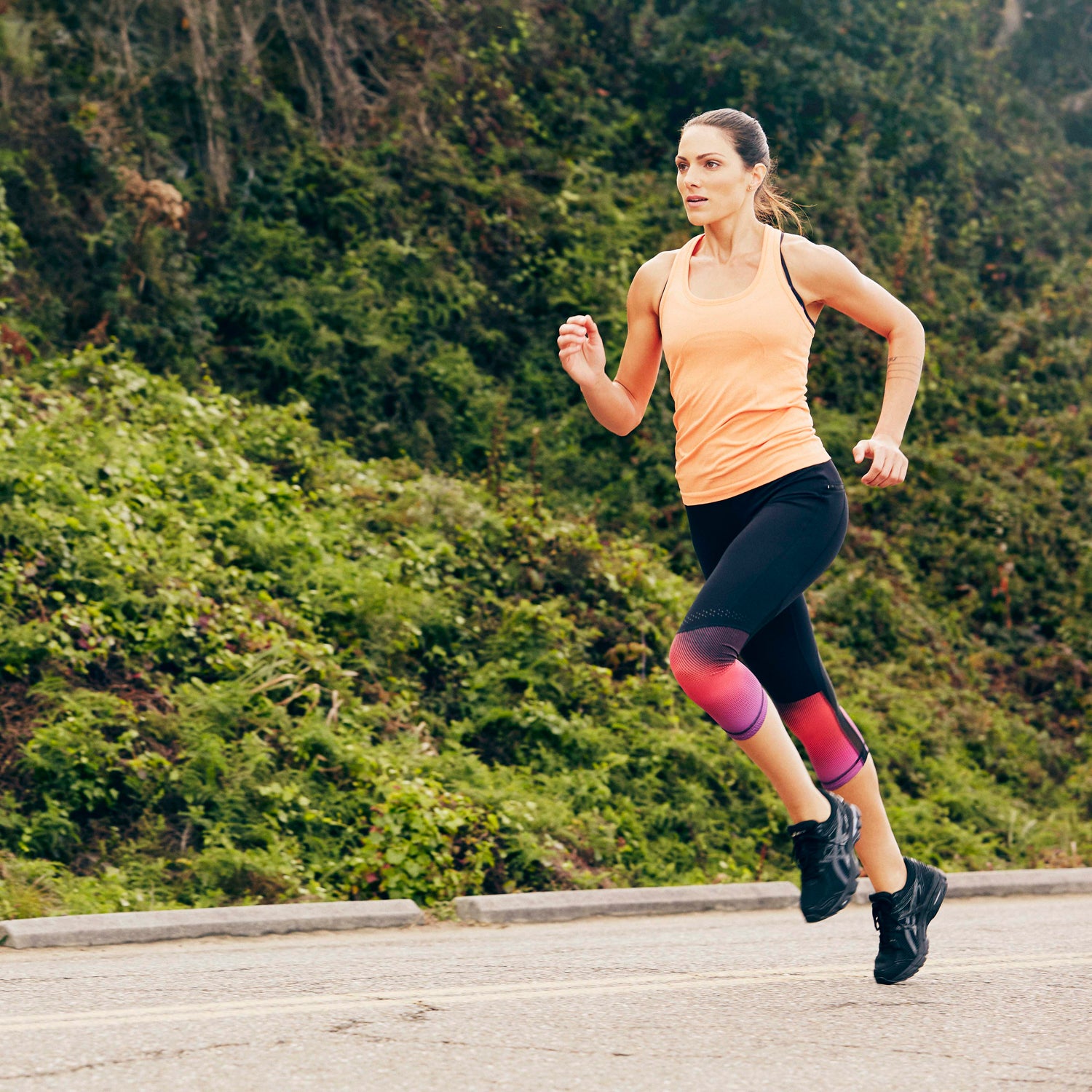As I ran alongside the Yampa River in Colorado, I didn’t just feel in the zone—I knew I was in it. The sensor embedded in my tights was tracking my cadence and beaming it to an iPhone carried by , who ran beside me. For several minutes, the Lumo Run app on Wang’s phone had been silent, meaning my steps per minute hovered around my target of 185. (Lower numbers suggest you’re overstriding, which ups the load on your knees and hips and raises your risk of injury.)
But before I could collect my gold star, my cadence dipped to 170, and the app issued this advice: “Imagine you’re running through a puddle, trying not to make a splash.” I adjusted. Sure enough, my steps per minute returned to the target.
“We didn’t want the coaching to be super-academic or complicated,” says , a marathoner and Stanford University biomechanist who helped to steer development of Lumo Run, which hits the market in March.
Even so, Lumo Run promises to offer lab-quality feedback on a runner’s form in real-world situations. “Labs and treadmills are great, but they’re very controlled environments,” says Shultz. Lumo Run lets athletes see what happens on hills and around curves. Those metrics can help elite runners improve their performance, but recreational runners can also benefit, says Shultz, because poor form ups the chance of injury.
“Labs and treadmills are great, but they’re very controlled environments,” says Rebecca Shultz. Lumo Run lets athletes see what happens on hills and around curves. Those metrics can help elite runners improve their performance.
Lumo Run was built by the same team that created , a wearable that promotes healthy posture by registering the position of your spine. Since several Lumo founders are also runners, they sought a way to apply that body-awareness technology to their favorite sport. Enter Lumo Run, which integrates a small, pebble-size sensor—containing an accelerometer, gyroscope, and battery that lasts 30 days between charges—into the waistband of men’s running shorts and women’s capri tights.
Why not make a sensor runners can use with shorts they already own? “That would’ve been bulkier,” says Wang, whose goal was to make Lumo Run as simple and streamlined as possible. The company’s specially designed shorts and tights feature conductive fabric that transmits data imperceptibly. The waterproof sensor handles rainstorms and machine washing and slides into a discreet sleeve built into the back of the waistband, where I never noticed it.
More important, says Shultz, positioning the gyroscope snugly on the sacrum produces the most useful insights. “When it comes to running form, the pelvis is destiny,” she says. Lumo Run uses sophisticated algorithms to translate the movement of your hips into data about your cadence, bounce, braking, pelvic rotation, tilt, and drop—all charted on your iPhone using the Lumo Run iOS app (an Android version will be available later).
Not even elites can correct all those measures at once, so when you open the app, it asks you to select the one thing you’d like to be coached on. If you’d rather not run with your phone, you can sync the sensor and phone after your workout to browse the data—you just don’t get the benefit of in-the-moment feedback.
Shultz recommended that I start with cadence, which is the easiest to learn and produces the most dramatic improvements in form. As I ran, I obeyed tips such as, “Imagine you’re balancing an egg on your head and you don’t want it to fall off.” (That advice came from champion marathoner Meb Keflezighi, one of the elites who contributed to Lumo Run’s cache of coaching suggestions.)
Switching to other measures, such as pelvic tilt and rotation, I found it much more difficult to get my positioning into the “good” zone. “Brace your core, as if you’re expecting a punch,” suggested the app, but despite my best efforts, I couldn’t nudge my pelvis into the preferred angle. Knowledge is power, but change remains hard.
Using Lumo Run to prevent injuries or overcome an existing problem may require help from a qualified coach who can help runners interpret their data. Although the app illustrates the various aspects of your form in a neat, easy-to-read pie chart, it doesn’t warn you about potential problems, nor does it forecast injury the way a Prius gauges your MPG. You simply have to trust that by improving your cadence (or other elements of form), you will reduce running’s toll on your joints and connective tissues and prevent problems such as patellofemoral pain syndrome (or “runner’s knee”).
Still, Lumo Run struck me as a great way to spice up base-building runs and treadmill workouts. My one test session with it markedly improved my cadence, and if that’s all it did, the $99 price tag (for pre-orders) seems reasonable, because even without sensors and trackers, top-shelf running tights can cost $150 or more.
For fitness runners, the system seems like a low-fuss way to develop body awareness and better form. Dedicated racers, meanwhile, can totally geek out on the economy-boosting potential of hip rotation. Both groups can benefit from how Lumo Run democratizes biomechanics data. It’s lab-quality running analysis for the everyman.


